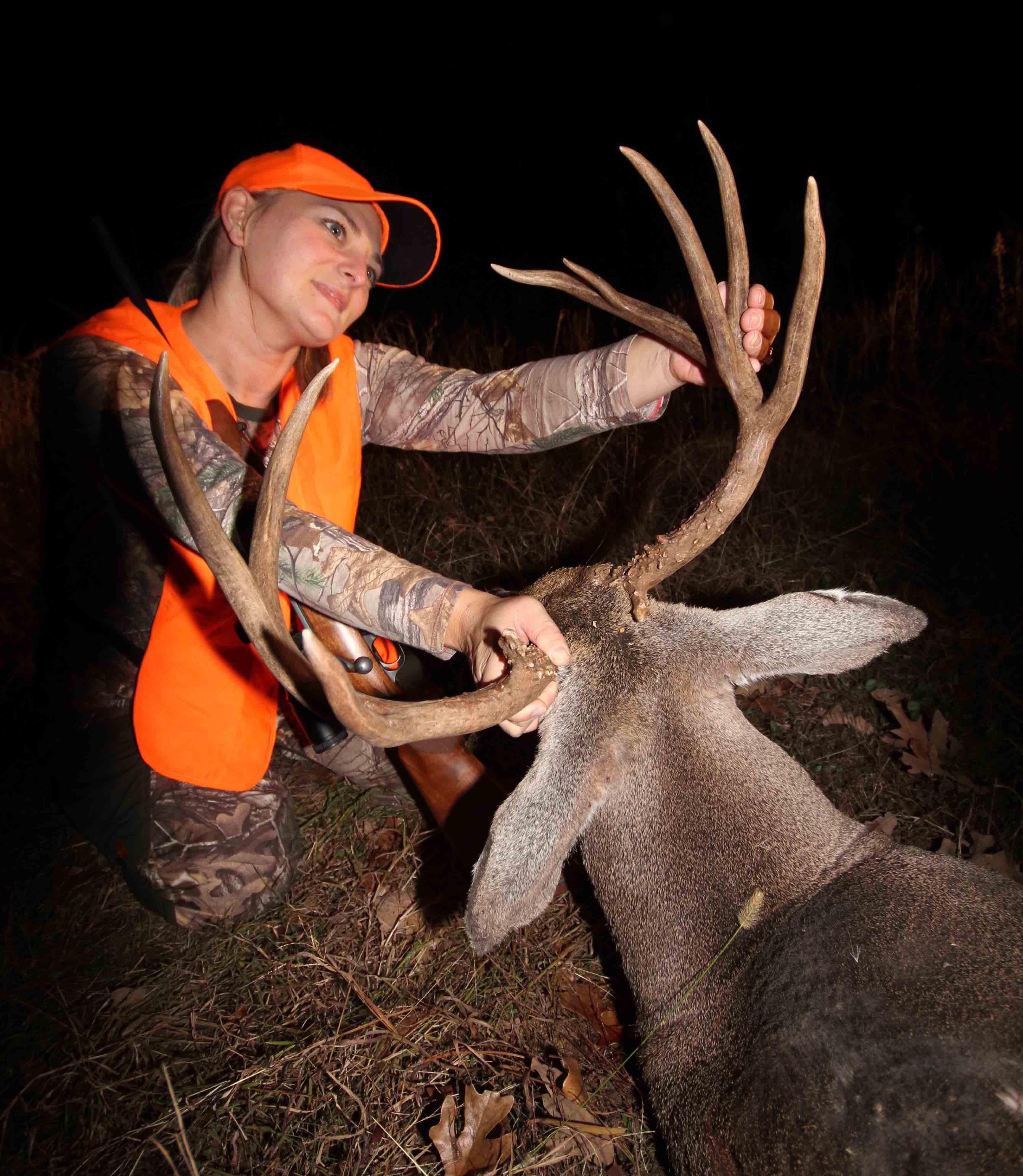How to Kill a Good Buck on a Small Farm
It's easy to get frustrated with articles and outdoor television shows preaching the importance of having various stand setups and food plots and sanctuaries on your hunting property if you want to kill a big deer. We posted an article this week where three experts with multiple Booners under their belts weighed in with their advice for bagging that coveted trophy.
There was excellent advice in that piece, too, but I think much of it was glossed over. The overwhelming reader response was: That article doesn't apply to me because I don't have the money to access big acreage like those guys do.
In some regards, that's true. The simple reality for most of us is that we have to hunt where we can. And many times, that means the family-owned 50 acres. Maybe less. For my wife and me, it's 33 acres. Now to be clear, we have access to a couple great farms where we do a lot of our hunting. But we wanted a place we could call our own, close to home, where we weren't at the mercy of a lease agreement. We didn't have much to spend. Michelle's a teacher, and I'm a writer. Steven King is a rich writer. But he doesn't write about deer and duck hunting. And I'm not as weird as he is.
Anyhow, we started putting back every bit of money we could for a down-payment. We actually found our farm when some deer crossed the road in front of the truck, next to a For Sale by Owner, 33 Acres sign. That was three years ago this winter.
Fast-forward to Monday evening, when I got an excited phone call from Michelle. She'd just shot the buck in this photo - her biggest ever, and the first buck from our place. Was the buck a Booner? No. But we each grabbed a main beam and wrestled that sucker through the woods and into my truck. I don't know that you could've found two happier hunters anywhere in the country at that moment.

- Like many small properties, ours was lacking a few ingredients. We had plenty of cover, but little food outside of browse and mast. And so last winter, we set to work with a borrowed tractor and cleared out an opening just shy of an acre in size. There's a good stand of clover and chicory growing there now, sowed with a POS pull-behind spreader I bought at Wal-Mart.
- We established a couple mineral sites and set up three bait stations with homemade PVC pipe feeders. There aren't any crops in that immediate area, so the deer flocked to the easy, high-calorie food. It's fashionable to avoid the baiting stigma by calling it supplemental feeding. If it helps you sleep better at night to call it that, go for it. Around here, it's legal, and in a place like this with few other options, it works quite well.
- By late summer, we had a few velvet regulars on our trail cameras, along with plenty of does. Michelle and I love venison, and we like to shoot does. But we picked out battles. We killed our does early on, and we avoided shooting them from our best stands. In addition, we kept our shots close so that when we did shoot one, the tracking job was short. That kept us from contaminating the areas with all-night tracking jobs.
- We hunted the wind. No exceptions. On a property that small, you simply cannot mess up. Trail cameras showed that the buck Michelle killed had been cruising for does regularly near her favorite stand just before gun season. That stand requires a west wind, though, and we didn't have that in the forecast until the third day of season. That stand remained untouched until then.
- The stand was a no-bust setup. Sitting a stand in the right wind does no good if you spook everything walking in. Michelle had about an hour and a half of daylight to burn after work that day. She spent 20 minutes of that walking down a busy blacktop highway to get the wind in her favor, and then sneaking unseen up a ravine to her stand. It's a ladder stand set on the edge of that ravine, facing 40 yards of open timber bordering a thick bedding area. The west wind blows over the top of that ravine, into an area where deer rarely travel.
- Stick it out. We've logged a dozen or more sits in that stand since September. But it wasn't overhunted, because we hunted when the conditions were right and didn't spook deer. Choosing your sets carefully and then putting in the time fills tags. Period.
At the end of the day, you can look at those factors and compare them to the advice those guys gave on killing those Booner bucks. Sure, access to acres of great ground is a good thing to have. But hunting smart works everywhere whitetails live. Even on 33 acres.






